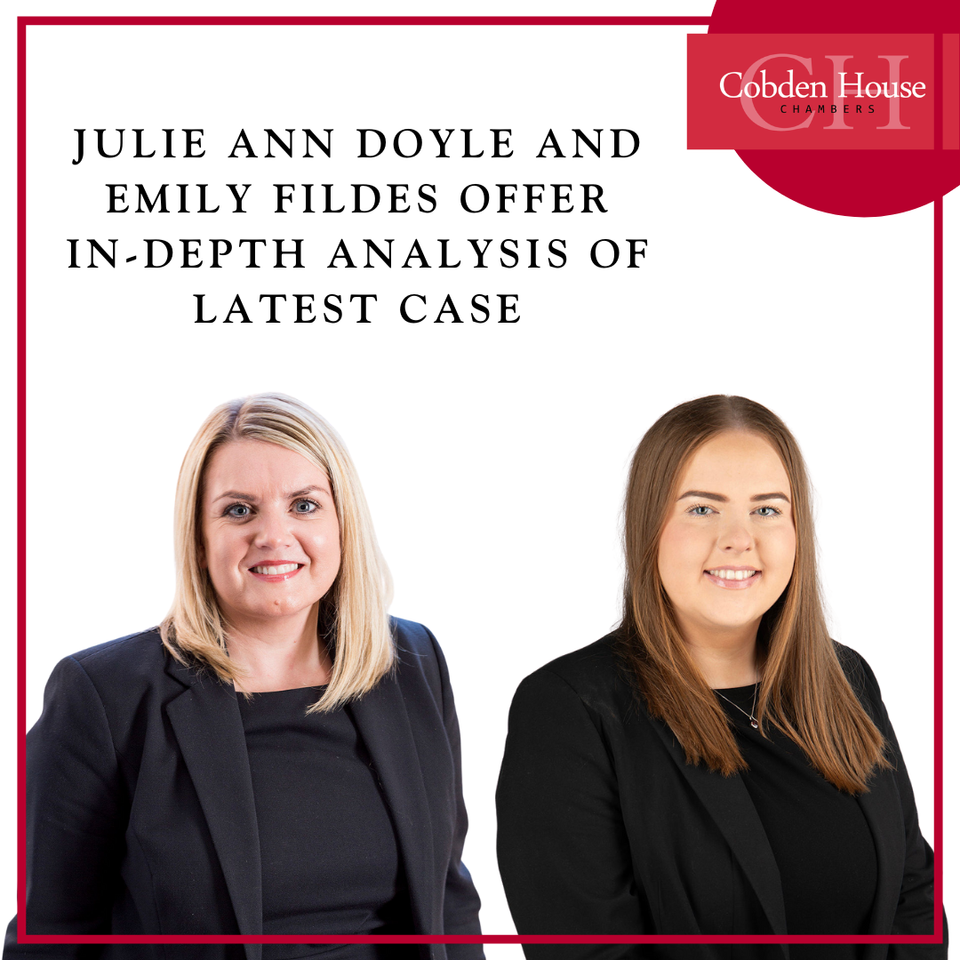
Julie Ann Doyle recently appeared on behalf of the Applicant non-biological mother in the case of M (A child) (No 1) [2023] EWFC 312 (B) and M (A child) (No 2) [2024] EWFC 99 (B) Judgments were handed down on 13 April 2023 and 2 May 2024.
Julie acted on behalf of the Applicant non-biological mother in this case. The Applicant (‘Alice’) initially made an application for contact with a child in care. However, by the final hearing applications had been made for the discharge of a care order, a Child Arrangements Order ‘lives with’ in the Applicant’s favour, restrictions to be placed on the exercise of the Parental Responsibility of the Respondent biological mother (‘Bethany’), contact to remain supervised and an order under section 91(14) of the Children Act 1989 to be made for a period of 5 years.
The parties were in a same-sex relationship for a period of six years. The child (‘Mary’) was conceived under a private arrangement and was bore and delivered by the Respondent biological parent. The Applicant was not named on the child’s birth certificate. The parties commenced the step-parent adoption process and proceeded to get married which would assist in the Applicant being formally recognised as a parent to the child. After two years, the parties divorced. After separation, the Respondent was opposed to the Applicant playing any role in the child’s life. The Court found that both parties had been a family unit at the point of conception and granted Parental Responsibility to the Applicant non-biological mother.
These proceedings followed previous lengthy court involvement and HHJ Forrester’s interim decision, which was endorsed by HHJ Lancaster’s final determination, that the child be removed from the Respondent’s care and placed in the care of the Applicant under a care order. The Court ruled that the Applicant was the child’s ‘psychological parent’ in accordance with an earlier judgment of DJ Jabbar. HHJ Forrester subsequently refused several requests for unsupervised contact and a discharge of the care order made by the Respondent and ordered a section 91(14) order to be in place for a period of 3 years.
The Respondent refused to attend for contact if it were supervised. Over a period of four years, the Local Authority worked with the Respondent to reinstate contact. However, contrary to the existing court order once contact was re-established it was very quickly moved to unsupervised and a shared care arrangement. Shortly afterwards, the child was reported to be making “allegations” against the Applicant and was placed back in the care of the Respondent. The Respondent stopped contact between the child and the Applicant. Due to concerns of emotional harm being perpetrated by the Respondent, the child was removed from their care by the police and placed in foster care. The child was subsequently returned to the care of the Applicant.
HHJ Baker was satisfied on the balance of probabilities that ‘the primary cause of the cessation in contact between Mary and Alice in 2022 was Bethany’s influence on Mary’. HHJ Baker agreed with the Children’s Guardian’s analysis, that the Respondent is unable to promote a relationship between the child and the Applicant, notwithstanding finding that the Respondent had behaved in such a way that was ‘designed to dominate or exert control’.
Agreeing with the submissions made by Miss Doyle on behalf of the Applicant, HHJ Baker expressed regret that ‘in 2022 the local authority allowed itself to be manipulated by Bethany in circumstances where a clearer examination of the evidence and conclusions of the Court in the previous proceedings would have highlighted the risks in the steps that were taken by the local authority and could have prevented Mary suffering the harm that she was clearly exposed to.’
In allowing the applications, the Court ordered supervised contact between the child and the Respondent to take place, such supervisors and venues to be agreed by the Applicant, until the Respondent can demonstrate change, or the child is of an age and understanding such that the risks have ‘reduced or can be ameliorated’. HHJ Baker further discharged the care order and made a supervision order alongside a child arrangements order ‘lives with’ in favour of the Applicant, a position which was supported by the Local Authority and endorsed by the Children’s Guardian.
Further, the Court determined that an order pursuant to section 91(14) of the Children Act 1989 for a period of 5 years was appropriate, endorsing the view of Jackson LJ, commenting ‘First, the imposition of a leave requirement should no longer be thought of as presumptively disproportionate when viewed in light of PD12Q and the amendments to the Children Act. Secondly, such a period would cover the transition from primary school to secondary school. Thirdly, the evidence of harm and disruption to Mary is such that a longer period of recovery and stability is warranted’.
HHJ Baker granted Specific Issue Orders which restrict the Parental Responsibility of the Respondent biological parent. HHJ Baker ordered that the Applicant is not required to obtain the consent of the Respondent biological parent when making decisions about the child’s health, including vaccinations and medical treatments, the child’s school and education, and when wanting to take the child on holiday, whether out of the jurisdiction or not, for a period of up to 28 days.
The full judgments (handed down on 13 April 2023 and 2 May 2024) can be found at:
Part one:
"M (A Child) (No 1) [2023] EWFC 312 (B), Re", https://caselaw.nationalarchives.gov.uk/ewfc/b/2023/312
https://www.bailii.org/ew/cases/EWFC/OJ/2023/312.html (13th April 2023)
Part two:
"M (A Child) (No. 2), Re [2024] EWFC 99 (B)" https://caselaw.nationalarchives.gov.uk/ewfc/b/2024/99
https://www.bailii.org/ew/cases/EWFC/OJ/2024/99.html (2nd May 2024)
With thanks to instructing Solicitor David Williams of Cumbria Family Law.
Written by Julie Ann Doyle and Emily Fildes (Pupil Barrister)
This site uses cookies that enable us to make improvements, provide relevant content, and for analytics purposes. For more details, see our Cookie Policy. By clicking Accept, you consent to our use of cookies.